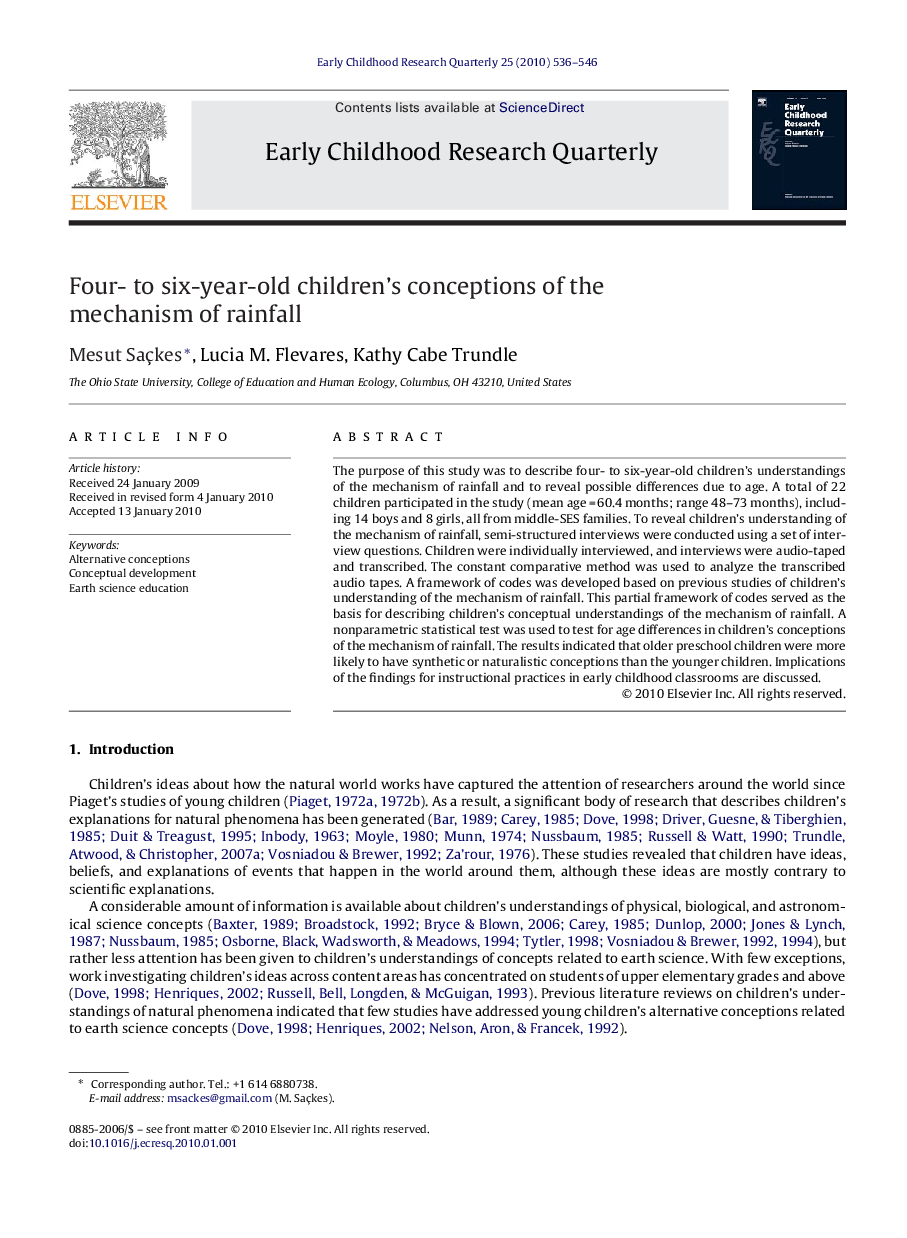| Article ID | Journal | Published Year | Pages | File Type |
|---|---|---|---|---|
| 354202 | Early Childhood Research Quarterly | 2010 | 11 Pages |
The purpose of this study was to describe four- to six-year-old children's understandings of the mechanism of rainfall and to reveal possible differences due to age. A total of 22 children participated in the study (mean age = 60.4 months; range 48–73 months), including 14 boys and 8 girls, all from middle-SES families. To reveal children's understanding of the mechanism of rainfall, semi-structured interviews were conducted using a set of interview questions. Children were individually interviewed, and interviews were audio-taped and transcribed. The constant comparative method was used to analyze the transcribed audio tapes. A framework of codes was developed based on previous studies of children's understanding of the mechanism of rainfall. This partial framework of codes served as the basis for describing children's conceptual understandings of the mechanism of rainfall. A nonparametric statistical test was used to test for age differences in children's conceptions of the mechanism of rainfall. The results indicated that older preschool children were more likely to have synthetic or naturalistic conceptions than the younger children. Implications of the findings for instructional practices in early childhood classrooms are discussed.
